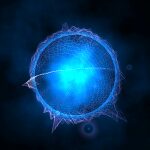Lien vers Pubmed [PMID] – 40164621
Lien DOI – 10.1038/s41467-025-57943-y
Nat Commun 2025 Mar; 16(1): 3090
Advances in tissue labeling, imaging, and automated cell identification now enable the visualization of immune cell types in human tumors. However, a framework for analyzing spatial patterns within the tumor microenvironment (TME) is still lacking. To address this, we develop Spatiopath, a null-hypothesis framework that distinguishes statistically significant immune cell associations from random distributions. Using embedding functions to map cell contours and tumor regions, Spatiopath extends Ripley’s K function to analyze both cell-cell and cell-tumor interactions. We validate the method with synthetic simulations and apply it to multi-color images of lung tumor sections, revealing significant spatial patterns such as mast cells accumulating near T cells and the tumor epithelium. These patterns highlight differences in spatial organization, with mast cells clustering near the epithelium and T cells positioned farther away. Spatiopath enables a better understanding of immune responses and may help identify biomarkers for patient outcomes.





